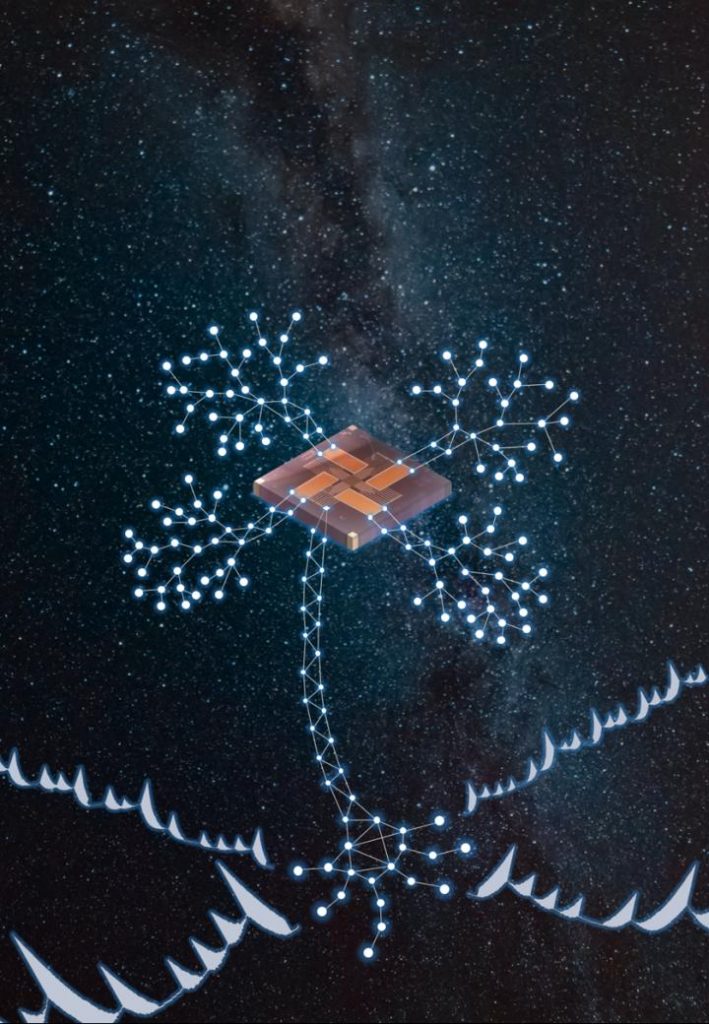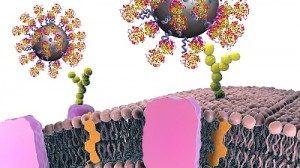
It kind of reminds me of ‘Hello Kitty’. However, you can see in this larger version that 1/2 of this cat has a skeletal paw giving it kinship to Erwin Schrödinger’s cat.
The app was first announced in a September 28, 2021University of Würzburg press release on EurekAlert,
Cute but half-dead
Ding, dong. There is a box in front of the door. And inside there is … a cute but half-dead cat! The main character of the new game app “Kitty Q” of the Würzburg-Dresden Cluster of Excellence ct.qmat–Complexity and Topology in Quantum Matter of the Universities of Würzburg and Dresden accompanies children and teenagers aged 11 and older into the crazy quantum world. The adventure is intended to primarily get girls excited about the fascinating phenomena of quantum physics. The model for the lovingly designed “Kitty Q” is a popular thought experiment in quantum mechanics by Nobel Prize winner Erwin Schrödinger (1887 – 1961), known as Schrödinger’s cat–alive and dead at the same time.
But fun first
Those who embark on adventure with “Kitty Q” can tinker, try out, experiment on their smartphones and solve more than 20 attractive brainteasers along the way. Importantly, the kids don’t have to be math whizzes or physics geniuses. After all, “Kitty Q” is all about fun!
“The game is an Escape Game after all, even though it conveys quite serious scientific content. It is intended to awaken curiosity and encourage trying things out. Indeed, that’s what science is all about: discovering new things by thinking and experimenting,” says the app designer Philipp Stollenmayer, explaining the character of the game app he developed. “The gamers experience an exciting world, collect stickers and design their cat individually. Just like in real life, you need to work in the quantum world to acquire your knowledge. It was important to me to show how much fun this could be!” “Kitty Q” is the first commissioned project for Stollenmayer who otherwise works exclusively on his own and has won all the major prizes in game design since 2013–most recently the Apple Design Award 2020.
…
Donuts, randomness, cold chips
The focus of the game app is on the more than 20 puzzles based on scientific facts from quantum physics–the concept of chance, donuts as “symbol” of topological quantum physics, cold chips for revolutionary high-tech and quantum computers, to name a few examples. Those who like can access background knowledge, edited in a popular way, as “Kittypedia articles” as soon as a puzzle has been solved.
“The research field of our Cluster of Excellence ct.qmat–topological quantum physics–promises revolutionary insights and groundbreaking developments. But the subject is still so young that it will take quite a few years before it arrives in classroom. We are trying to bridge this gap with the app,” explains Matthias Vojta, Professor of Theoretical Solid State Physics at Technische Universität (TU) Dresden and spokesperson of the Dresden branch of the ct.qmat research alliance. Topological quantum physics uses topology–a branch of mathematics–as a tool to theoretically describe the interior of novel quantum materials. This is a Nobel Prize-winning research approach that ct.qmat applies.
Attracting female physicists
The game takes unusual approaches to attract children and teens to mathematics, computer science, natural and technical sciences (STEM)–and especially to quantum physics–at an early age. The focus is particularly on girls, since young women are underrepresented in physics degree programs in particular. The game targets at an age group in which interest in physics and the natural sciences is shaped.
“At least since the German government passed the economic stimulus package last year and more than two billion euros flow into German quantum research, our field of science has arrived in society. Unfortunately, there is already a significant shortage of skilled personnel in physics. With our mobile game, we want to make physics an experience, appeal to tomorrow’s researchers and Nobel Prize winners, and thus keep Germany’s high tech economy running,” comments the spokesperson of the Würzburg branch Ralph Claessen, Professor of Experimental Physics at Julius Maximilian University (JMU) Würzburg.
…
The latest about Kitty Q can be found in a December 21, 2021 Technische Universität Dresden press release on EurekAlert,
“We are thrilled that our app ‘Kitty Q’ was honored as a ‘Serious Game’ at the Games Innovation Award Saxony. The references to quantum physics are always there, but our game can also be played completely without math or physics know-how. Detailed background knowledge is optionally available in the ‘Kittypedia’. We invested a lot of work in compiling these generally understandable encyclopedia articles on quantum physics. We are immensely pleased that this award highlights the aspect of knowledge transfer in particular,” explains Prof. Matthias Vojta, Professor of Theoretical Solid State Physics at Technische Universität (TU) Dresden and spokesperson of the Dresden branch of ct.qmat.
The next round of ” Kitty Q” is now starting with the project “QUANTube–Science Break”: “From January 2022 on, our young researchers will be answering questions about quantum physics sent to us by players from all over the world in entertaining explanatory videos. We are challenging ourselves in terms of easy comprehensibility and language suitable for children and young people,” explains the spokesperson of the Würzburg branch of the Cluster Prof. Ralph Claessen, Professor of Experimental Physics at Julius Maximilian University (JMU) Würzburg. “The fact that the DFG has now awarded a Community Prize to ‘QUANTube’ is a special honor for us because it is awarded by marketing experts from the research community and not by a specialist jury. Perhaps there is even some curiosity about our implementation behind the vote.”
The game app “Kitty Q” has so far been downloaded 65,000 times worldwide. “It’s great to see how enthusiastically people are playing and how great the feedback and ratings are. That is anything but a matter of course for a game that imparts knowledge,” says app designer Philipp Stollenmayer, who developed the game for the Würzburg-Dresden Cluster of Excellence. So far, Stollenmayer has won all the major prizes in game design for the games he has developed on his own–most recently the Apple Design Award 2020.
Answering questions from the players using video
Whoever solves a certain puzzle in the mobile game “Kitty Q–a Quantum Adventure” earns a bonus app, which can be used to ask the researchers of the Cluster of Excellence ct.qmat a question. So far, more than 45 questions on physics and quantum physics have been sent via the in-game bonus app.
All questions will be answered by the doctoral and postdoctoral researchers of the Cluster of Excellence on a topic-related basis in YouTube explanatory videos starting as of January 2022–in school break length of about five minutes and in line with the Science Year 2022, which has the motto “Inquire into a matter”. For recruiting next generation of scientists, the cluster also relies on its strong network with five non-university partner institutes: Helmholtz-Zentrum Dresden Rossendorf, Leibniz Institute for Solid State and Materials Research Dresden, Max Planck Institute for Chemical Physics of Solids Dresden, Max Planck Institute for the Physics of Complex Systems Dresden and Bavarian Center for Applied Energy Research.
“QUANTube–Science Break” #1 Schrödinger’s Cat
The first QUANTube episode answers questions about “Schrödinger’s cat”. The video will be published on the YouTube channel of the Cluster of Excellence ct.qmat at the end of January: https://www.youtube.com/c/ClusterofExcellencectqmat
America, England, Vietnam, China, and Germany–questions about cats were sent in from all over the world: What does the Q in kitty Q stand for? Why is the cat half dead? How long do cats live when they are half dead? What do the cat’s atoms look like when it is dead and alive at the same time? Why did Schrödinger use a cat and not another animal in his thought experiment in the first place?
A little preview of the new QUANTube video series is provided by a teaser video that answers the question, “What do cats actually have to do with physics?”
…
Here’s the QUANTube–Science Break video series teaser/preview,
You can find out more about Kitty Q (English language version) here or you can access the Katze Q (German language version) here.

